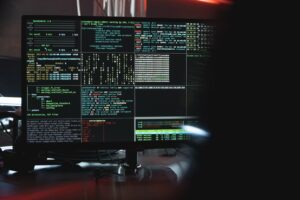1. The Importance of Understanding Information Leakage in Cybersecurity: Protecting Your Data from Breaches
2. Exploring the Risks of Information Leakage and its Impact on Cybersecurity
3. Mitigating Information Leakage: Strategies for Safeguarding Sensitive Data in the Cyber World
Understanding Information Leakage: A Vital Concern in Cybersecurity
In today’s digital age, with sensitive data being stored, transmitted, and processed extensively, understanding information leakage is critical to ensuring the robustness of cybersecurity measures. Information leakage refers to the unintentional exposure of sensitive or confidential data to unauthorized individuals or entities. This kind of exposure can be detrimental, leading to data breaches, financial losses, reputational damage, and legal consequences. Therefore, organizations and individuals must recognize the importance of comprehending and addressing information leakage to safeguard their data effectively.
1. The Importance of Understanding Information Leakage in Cybersecurity: Protecting Your Data from Breaches
Information leakage poses a significant threat to the security of any organization or individual. By understanding how information can be inadvertently leaked, you can implement appropriate measures to prevent breaches and protect your valuable data. One of the foremost reasons for understanding information leakage is to avoid falling victim to cybercriminals who actively seek out vulnerabilities in systems. A thorough comprehension of potential leakage points helps organizations identify and mitigate these vulnerabilities, bolstering their cybersecurity defense.
Furthermore, understanding information leakage provides insight into the various attack vectors that cybercriminals exploit. Whether it is through social engineering tactics, phishing emails, or exploiting software vulnerabilities, a solid understanding of how information can leak enables individuals and organizations to anticipate potential risks and implement proactive measures to prevent them. By being proactive rather than reactive, organizations can avoid compromising their data and mitigate potential financial and reputational damages.
Lastly, understanding information leakage is crucial for ensuring compliance with industry regulations and legal requirements. Many industries, such as healthcare and finance, are subject to strict data protection regulations. By understanding information leakage, organizations can ensure that their cybersecurity measures align with these regulations, reducing the risk of penalties and legal consequences.
2. Exploring the Risks of Information Leakage and its Impact on Cybersecurity
The risks associated with information leakage are numerous and impactful. The primary risk stems from the exposure of sensitive or proprietary information to unauthorized individuals. This can result in financial loss, intellectual property theft, and compromised customer or patient data. For businesses, intellectual property is often a crucial asset, and its exposure due to information leakage can have severe long-term implications.
Information leakage also affects the overall cybersecurity posture of an organization. When sensitive data is leaked, it becomes easier for attackers to exploit other vulnerabilities in the system. This can lead to secondary breaches, where previously unidentified vulnerabilities are exploited, resulting in further data loss or manipulation.
The impact of information leakage on cybersecurity goes beyond financial losses. Organizations also face reputational damage, loss of customer trust, and diminished brand loyalty. In today’s interconnected digital world, news of a data breach spreads rapidly, and customers are less likely to engage with organizations that have a history of information leakage incidents. This loss of reputation can have long-lasting effects and can hinder future growth and success.
3. Mitigating Information Leakage: Strategies for Safeguarding Sensitive Data in the Cyber World
To mitigate the risks of information leakage, organizations must adopt robust cybersecurity measures. Here are three key strategies for safeguarding sensitive data:
a) Data Encryption: Encryption is a fundamental technique for protecting sensitive information. By encrypting data both at rest and during transmission, organizations can ensure that even if the information is intercepted, it remains unreadable to unauthorized individuals. Implementing strong encryption algorithms and managing encryption keys securely is essential for effective data protection.
b) Access Control and Authentication: Implementing stringent access control measures, such as role-based access controls and multi-factor authentication, adds an additional layer of security. By limiting access to sensitive data only to authorized individuals and ensuring that authentication is strong, organizations can reduce the risk of unauthorized leakage.
c) Regular Security Audits and Employee Training: Conducting comprehensive security audits and vulnerability assessments can help identify potential weaknesses and ensure ongoing security. Additionally, organizations should invest in regular employee training programs to educate employees about information leakage risks, social engineering attacks, and best practices for security. A well-informed workforce plays a critical role in preventing information leakage incidents.
In conclusion, understanding information leakage is of utmost importance in cybersecurity. By comprehending the risks, impacts, and mitigation strategies associated with information leakage, organizations and individuals can better protect their valuable data and mitigate potentially devastating breaches. Enhancing cybersecurity measures through encryption, access control, regular audits, and employee training can significantly reduce the risk of information leakage and safeguard sensitive data in the cyber world.


